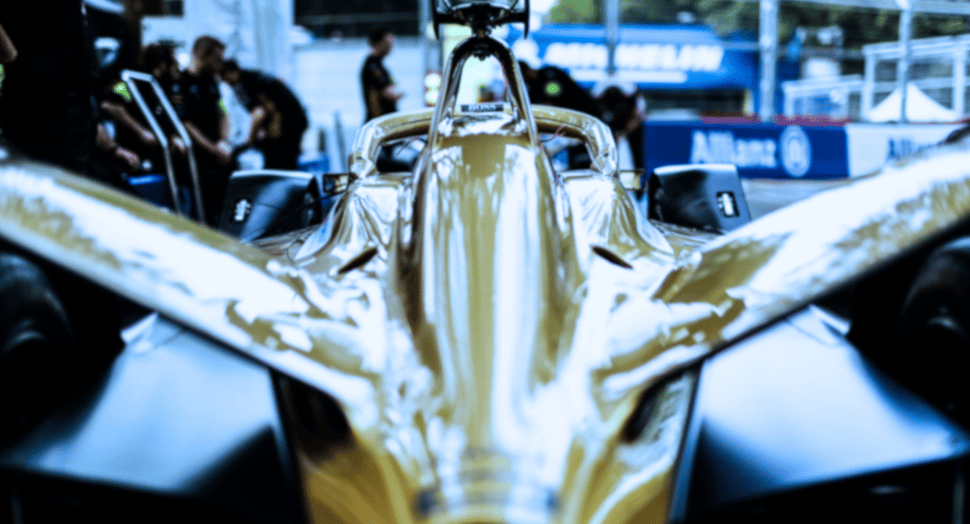 Learn about the exciting world of Formula-E racing and how it's driving innovation in electric vehicle technology. From cutting-edge racing cars to advancements in EV charging systems, we'll explore how this sustainable sport is leading the way towards a greener future.
Learn about the exciting world of Formula-E racing and how it's driving innovation in electric vehicle technology. From cutting-edge racing cars to advancements in EV charging systems, we'll explore how this sustainable sport is leading the way towards a greener future.
Formula-E racing is an exciting, high-speed, high-tech sport that's changing the face of racing as we know it. Unlike traditional gas-powered race cars, Formula-E cars are powered entirely by electricity, making them a more sustainable and eco-friendly option for racing enthusiasts.
What is Formula-E?
Formula-E racing combines the thrill of high-speed racing with the cutting-edge technology of electric vehicles (EVs). The racing series uses electric-powered single-seater race cars to compete in city circuits around the world. The cars are designed to be fast, agile, and energy-efficient, with the ability to reach top speeds of up to 280 km/h (174 mph). The races are typically held on street circuits in major cities, such as New York, Paris, and Hong Kong.
How are points awarded in Formula-E?
The Formula-E point system is based on the FIA standard for motorsport series, with the winner of each race being awarded 25 points. The points decrease incrementally for the following positions, with the 10th place finisher receiving just 1 point. Additionally, drivers can earn extra points by securing pole position in qualifying and setting the fastest lap during the race. In the case of a tie, the driver with the most race wins will be ranked higher in the standings. The team championship works similarly, with teams earning points based on the finishing positions of their two drivers, and the team with the most points at the end of the season crowned as the champion. In Formula-E there are no "constructors' championships," as the teams all use identical cars provided by the series.
How are the cars charged?
Unlike traditional race cars that are fueled with gasoline, Formula-E cars are powered by lithium-ion batteries that can be recharged between races. The batteries have a capacity of 52 kWh and can last for around 45 minutes of racing before needing to be recharged.
What happens during Formula-E pit stops?
Formula-E pit stops are crucial moments for the teams to maximize their performance. Unlike traditional pit stops in other motorsports, where the teams may change tires or refuel the car, the pit stops in Formula-E are all about the battery. When the driver pulls into the pit, the team swaps the car's depleted battery for a fully charged one. The process typically takes less than a minute and is carried out with precision by the mechanics, who are trained to work under high-pressure situations. The battery change can make or break a team's race strategy, as they need to carefully plan the timing of the pit stops to ensure they have enough energy to make it to the finish line.
How is Formula-E different from other motorsports?
The duration of Formula-E races is also much shorter, typically lasting around 45 minutes, while F1 races can last up to 2 hours. The tracks used for Formula-E races are specifically designed to be in the heart of the city, rather than on the outskirts like traditional race tracks. This is because Formula-E is more than just a sport - it's a movement towards sustainable transportation.
What is “Attack Mode” in Formula-E races?
Attack Mode is an innovation that adds an extra layer of strategy to the race. Drivers are required to drive through a designated activation zone on the track, which triggers a boost in power that lasts for a set period of time, typically around four minutes. However, to activate Attack Mode, drivers must divert from the racing line, which can slow them down and potentially cause them to lose valuable positions. Attack Mode also has a limited number of activations available during the race, so drivers must use them wisely and strategically.
How does a Formula-E car compare to a passenger EV?
While Formula-E cars and passenger EVs both use similar battery technology, there are some key differences between the two. Formula-E cars are designed for speed and performance, with lightweight materials and aerodynamic shapes that allow them to reach high speeds on the race track. Passenger EVs, on the other hand, are designed for everyday use and typically have more emphasis on comfort, convenience, and range.
Electric vehicle (EV) technology has come a long way in recent years, and the innovations made in Formula-E racing are helping to push it even further. From battery technology to regenerative braking, the sport is driving innovation in the EV industry as a whole.
Whether you're a racing enthusiast or simply someone who wants to do their part for the environment, Formula-E racing is a great way to get involved in the exciting world of electric vehicles.
We're proud to be a part of the e-mobility movement and dedicated to providing innovative charging solutions that make it easier than ever for people to make the switch to electric vehicles.
Click Here to learn more about how Webasto is leading the charge with our state-of-the-art charging systems that are designed to work seamlessly with a variety of EVs.

